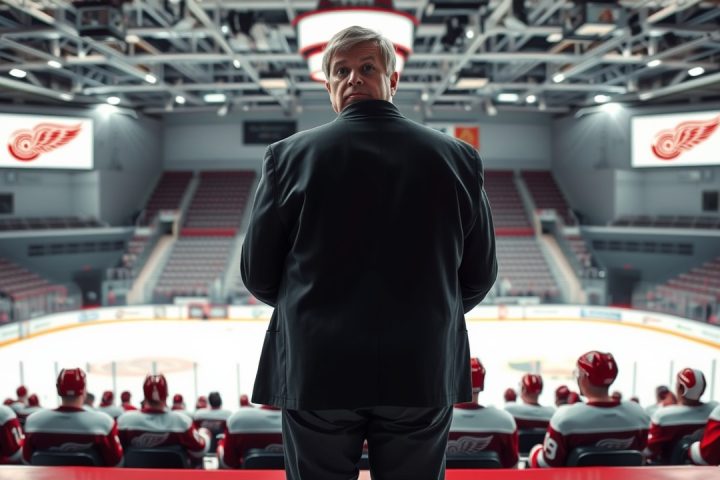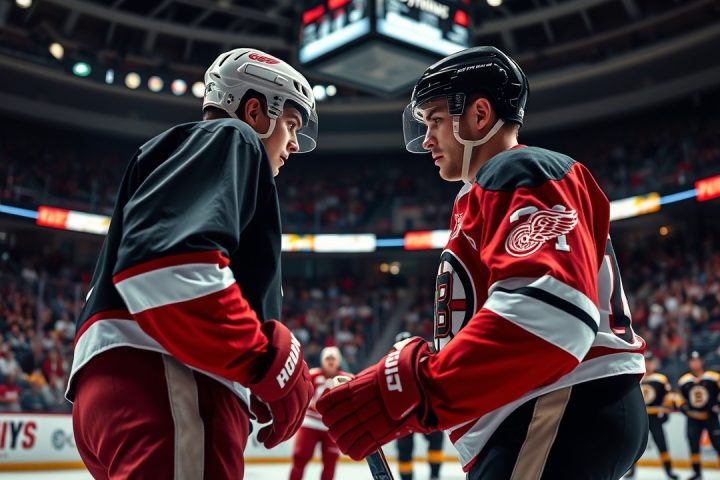NCAA Opens Doors to CHL Players
The NCAA’s decision to open its doors to players from the Canadian Hockey League (CHL) has set off a significant shift in college hockey recruitment. This change, initiated eight months ago, is culminating with a commitment date of August 1, 2025, as established by the Division I Council. As the fall semester approaches, a surge of commitments from players in the Ontario Hockey League (OHL), Quebec Major Junior Hockey League (QMJHL), and Western Hockey League (WHL) is anticipated. CHL teams are proactive in fostering relationships with NCAA programs and recruiting talent from U.S. minor hockey leagues and Canadian junior leagues.
Notable Commitments and Recruitment Strategies
In a notable development last Tuesday, star player Gavin McKenna, who is projected to be a top pick in the 2026 NHL Draft, announced his decision to join Penn State University for his draft year during an ESPN SportsCenter segment. This announcement marks a significant moment in NCAA hockey, showcasing just how seismic the upcoming changes could be following November’s rule revisions, making it perhaps the most impactful freshman signing seen in college hockey to date.
University programs like Penn State are employing robust strategies to attract recruits, leveraging their financial resources and recent success, including a Frozen Four appearance, to highlight their elite coaching staff led by Guy Gadowsky, as well as state-of-the-art facilities at Hockey Valley. Other universities are also adapting their recruitment tactics. Michigan State emphasizes its coaching lineage under Adam Nightingale and a revitalization of their ice arena to attract talent. Meanwhile, schools like Boston College and Maine have invested time at QMJHL rinks, which has yielded some positive recruitment results.
Continuing Allure of Junior-Level Development
At the same time, several players who were being courted by prestigious NCAA programs, including first-round talents Jake O’Brien and Benjamin Kindel, opted to remain with their CHL teams, illustrating the continuing allure of junior-level development in Canada. Overall, about 150 commitments from CHL players to NCAA programs have been recorded, with a notable percentage of those being 19-year-olds nearing graduation.
Reverse Trend and Competitive Landscape
Interestingly, the reverse trend is also occurring as over 25 players from the U.S. Hockey League (USHL) transitioned to the CHL this season. Teams such as the Saint John Sea Dogs have a proven track record of drawing talent from the northeastern U.S., while franchises like the Penticton Vees have strong connections to NCAA scouting networks.
The competitive landscape is intensifying, with schools and teams actively communicating and strategizing how to improve their recruitment stands. There is a growing sense that NCAA institutions have to elevate their offerings to compete against the financial backing and infrastructure of CHL franchises. Last week, for instance, the Drummondville Voltigeurs unveiled plans to upgrade their arena, illustrating a trend among CHL teams to elevate their platforms in response to college programs’ rising appeal.
Financial Incentives and Future Implications
Moreover, financial incentives are increasingly playing a critical role in these recruitment battles. McKenna’s reported NIL deal with Penn State is said to be valued at around $700,000 USD, a figure that surpasses previous offers extended to college hockey prospects. This kind of financial backing is pivotal in attracting quality players and could significantly impact college hockey’s growth trajectory.
The Penn State program itself, which transitioned to Division I only in 2011, has experienced a renaissance in recent years, transitioning from a struggling startup to a contender with fresh enthusiasm—signaled significantly by McKenna’s commitment. His arrival is anticipated to be transformative for the university’s hockey program, which seeks to assert itself alongside established powerhouses within the Big Ten Conference. With competitive momentum building, players like McKenna demonstrate how recruitment strategies on both sides of the border are evolving, marking an exciting new chapter for NCAA hockey.




